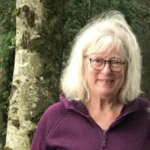
James Rebanks lives and farms not far from where I live and have worked as a semi-rural GP. Reading his book, English Pastoral, was a moving exercise as he grapples with the emotional experience of the death of traditional farming methods and with the explosion of factory farming.
He writes about his sense of retrieving some of what was lost in order to make life and farming more meaningful and differently productive. Getting the voice of the traditional farmer heard was an uphill battle, until the Soil Association found that the soil in the old farm rotating its crops was completely healthy and needed no more fertiliser than the manure already provided by the animals.
Significantly, what also produced success was close and compassionate observation of livestock, getting cattle out to grass, making hay less often, and using less medication. An apprenticeship to someone who deeply loved the work was the foundation of learning.
My childhood GP, Alwin Latham in Earl’s Court, London, was known to be a good diagnostician. I can remember her ‘popping in’ to check on me when I had a near brush with meningitis after a playground nose injury. She would simply look at me and take in how I was before checking vital signs, smiling, and moving on. She kept the headachy febrile me at home on antibiotics.
“… we have disempowered patients … become blind to symptoms and illnesses that aren’t in the ‘paid-to-do box’.”
Her practice was in the basement of her home. She set up a house for unmarried mothers. She developed facilities for drug addicts and better living arrangements for older people. She died in 2000 and many of her community ventures are still working. She taught general practice at medical school and taught the consultants to see the person behind the diagnosis. She changed people’s lives. I wanted to be a doctor like her, though perhaps cycling around London on home visits with a black bag in a basket wasn’t to be my forte.
General practice as it is now would not have attracted me. The whole-person medicine I was trained to appreciate and embrace at medical school at University College Hospital in the 1970s is now hard to find and sustain. Writing a list of the numerous subtle losses to prompt discussion at a Royal College of General Practitioners Cumbria faculty meeting raised questions. Who has been in charge of the processes of change in the last 20 years? Who has recognised the unintended consequences of changes? Is it too late to save family medicine 70 years on? What ingredients must be restored now that we have a full-blown factory farm model of primary care medicine?
We are told that demand has increased, GPs are leaving in droves, and retiring early. What is not thought about is how we have increased that demand ourselves, how we have disempowered patients in the process, how we have become blind to symptoms and illnesses that aren’t in the ‘paid-to-do box’.
It is time to sit back and reflect with our patients and colleagues about what we want to happen next in each of our diverse communities. Cecil Helman talks about the need to be a chameleon to understand where the patient is coming from. Maybe we also need to be a chameleon to understand the context of our communities rather than adopting the grey, ‘one-size-fits-all’ colour of bureaucracy.1
What was enjoyable?
I loved the surprises of each surgery. Every symptom and person mattered (there was payment by capitation fee rather than diagnosis). I loved home visiting and seeing the family relaxed in their environments talking more honestly. I loved the ‘cradle to grave’ approach of seeing people through life events with their social and medical aspects. We managed to create care continuity when it was needed, even for dying people. We knew the consultants at the hospital and they put on interesting seminars. Sometimes they did joint domiciliary visits, which were always informative. General physicians had an overview of medicine and supported primary care. It was going well.
Then something happened
Specialisation happened and the focus changed: in hospitals and in primary care. General physicians disappeared, except in geriatrics. Technology disrupted relationships in consultations and in making bookings for second opinions. ‘Choose and book’ was deemed to be more efficient, though it took a lot of admin and patient time. GPs became distanced from their hospital colleagues. Patients missed the reassuring effect of their doctor knowing the consultant about to offer them a scary procedure: a different sort of care continuity.
In 2004, with Quality and Outcomes Framework payments, GPs and practice nurses specialised in diabetes, asthma and chronic obstructive pulmonary disease, cardiovascular disease (CVD), dementia, and mental health. Neurology became a forgotten speciality as it wasn’t paid for except for epilepsy reviews. Acquired brain injury is as common as CVD, yet is much more complex to live with.2,3
“What ingredients must be restored now that we have a full-blown factory farm model of primary care medicine?”
Patients with a new diagnosis of cancer got sucked into the cathedral of the hospital system. It became hard to reflect with them about what they were experiencing, what they really wanted, and to advocate for them if treatment was being over- or underdone. Palliative care developed and was taken over by GP leads to whom the extended community team related. They weren’t necessarily used as consultants within the practice.
These doctors often felt burdened by the care they gave. Midwives were moved out of practices and GPs were left with the initial pregnancy referral and the 6-week postnatal check. Nurses looked after contraception and sexual health. Health visitors and school nurses were moved to public health and were promptly reduced in numbers. District nurses were employed by different organisations making decisions to cut numbers without consultation with primary care.
Community psychiatric nurses were taken back into community mental health teams (CMHTs). The way CMHTs took over the physical health checks of patients with severe mental illness undermined the management of physical illness for this group in the practice. Primary care mental health services were solely developed around cognitive behavioural therapy. Practices stopped employing their own eclectic practice counsellors and GPs felt deskilled in their counselling skills. An excellent certified training course was developed for drug and alcohol issues. The role of alcohol in a significant number of hospital admissions was neglected.4,5 A modified training course should have been delivered to all GPs. Physiotherapy became self-referral. GP appraisal was developed to help GPs reflect but it quickly became a tool of regulation and unhelpfully knotted in with revalidation by the General Medical Council. Johann Hari describes vividly the unintended losses associated with changes in Stolen Focus.6
The big picture adds more change
Aside from these multiple local organisational changes were major political changes to the medical landscape. Andrew Lansley’s one in 2012 was allegedly devised on the back of an envelope. In our area there were at least six changes of structure from 1999. With each restructuring, knowledge, memory, and experience was lost. The financial costs of this were never made explicit.
Politicians thought they could helpfully tinker with what they didn’t understand. Worse still, they didn’t know what they didn’t know. They failed to deliver drug and alcohol strategies, failed to understand how the diet of the nation created diabetes, heart disease, and obesity, and so increased the workload of primary care. Conflicts of interests abounded, with politicians holding hands with the food and alcohol industries, and some clinicians in the pay of drug companies to develop markets for new drugs. Even the Patients Association is funded by drug companies!
“It is time to take charge of what we do in our new primary care networks to make them more like what we had before it all went sour.”
The specialism of generalism in primary care medicine still isn’t recognised despite its advocates like John Horder in the early 1950s. This has allowed denigration to run rampant in the press. Politicians played a part in the war on expertise. Were they envious of professions and knowledge? Were they fearful of what they couldn’t control?
More organisation and oversight was deemed to be the answer: National Institute for Health and Care Excellence guidelines and evidence-based medicine, care pathways, the Care Quality Commission, command and control structures, algorithms, thresholds, and referral criteria. At times the barrage of information and new rules felt like a war zone, with a GP holding a shield to protect the patients from the artillery to get them to safety and treatment. Woe betide if, as a vulnerable patient, you needed a ‘circle of care’ rather than a stepped care pathway that you couldn’t quite manage to step onto.
Dr. Google and social media increased expectations of success with health and happiness in the medical hurdle race. Increasing poverty, loneliness, and family breakdown don’t help wellbeing. Are pills used to treat or numb these social causes of distress? Safeguarding adults, children, and families from a huge list of potential harmful situations has been added as part of the psycho-biosocial approach but not included in the GP contract — so social safety seems like an optional extra. Domestic abuse is as common as coronary heart disease.7
Professionals also need to feel safe physically and free from needless litigation and complaint. Work satisfaction and prevention of burnout depends to a great extent on relationships with colleagues and patients. The evidence-based maximum worked each day should be 8 hours.8,9 Longer than this and mistakes are made that can cause harm and take a long time to resolve. Lorry drivers have tachographs and pilots restricted flying time to prevent accidents and mistakes.
What is the job we are tasked to do?
My intention in doing medicine was to diagnose people’s illnesses correctly, help them feel better, and live happier lives. John Paulley (general physician in Ipswich) asked me as a medical student if I ‘was a healer?’ I said I didn’t know but I wanted to be. He said that if I wasn’t a healer I might as well quit, as my patients wouldn’t do well.10
Pereira Gray and others ponder the physician healer.11 The moral injury sustained by not being able to be any sort of healer is behind much burnout. The word ‘vocational’ was taken from GP training scheme titles by Health Education England. Was just the word lost or was the concept lost?
It is time to take charge of what we do in our new primary care networks to make them more like what we had before it all went sour. We can redevelop primary care, much as James Rebanks has redeveloped farming ideas.12 We need to give thought to ‘crop rotation’ in posts so that professionals get a healthy variety rather than a mentally constipating diet of telephone triage.
“The specialism of generalism in primary care medicine still isn’t recognised … “
We need thinkers and mentors like Margaret Heffernan to challenge our assumptions and our wilful blindness.8 We need organisational consultants like Frederic Laloux to show us other ways to work than command and control.13 We need journalists like Robert Whitaker to continue to investigate corruption in pharmaceutical research, and how to develop immediate transparency and safety.14
De-prescribing of medication and the understanding of medication’s hidden harms is long overdue. Prescribed medication and medication errors have a worryingly unquantified morbidity and mortality.15,16
Above all we need our patients to be able to trust us to care for them with the relationship skills we have in managing uncertainty and distress. Every symptom matters to our patients. Maybe as Victoria Sweet says in God’s Hotel, we can find the efficiencies in inefficiency and the inefficiencies in efficiency, and learn to look at our patients and communities with new eyes as they grow and learn.17 Public Health England, as the medical equivalent of the Soil Association, will tell us when the soil and context we have created for individuals and families to thrive in is just right. Poverty needs justice not the numbing effect of antidepressants.
In our medical homes we could shut the door to unhelpful politics and demand only intelligent respect to be allowed to cross the threshold. We don’t have to be victims of the system. Politicians could earn the right to comment by shadowing an experienced GP for at least a day, rather than behaving like Japanese knotweed, invasive and stifling other growth.
On the farm, James Rebanks pays attention to the field boundaries, fences, and walls to keep his livestock safe.12 He pays attention to the river and stream courses that need to meander to prevent flooding. He has undone the harmful work of the Victorian age, which wanted to straighten river courses out. Meandering is efficient. He pays attention to what Samuel Shem describes as ‘the spirit of the place’.18 Ronald Epstein describes the depth of relational care in Attending, just as James Rebanks’ grandfather noticed his animals health by simply gazing over the five bar gate.
The future
If we invited the shepherd farmer to look at our flocks of patients, how would he see them enabled to live as fulfilling a life as possible? He might describe how sheep in flocks do well together but also need to be seen as individuals to thrive. He might see the damage done in the second Elizabethan age of focusing on symptoms rather than what has happened.
GPs do not fit in the same flock as hospital doctors. GPs are like Herdwick sheep, tough, resourceful, resilient, and used to living out on the place beyond the field boundaries, where the hospital flock feel uncomfortable.
References
1. Helman C. Suburban Shaman: Tales from Medicine’s Frontline. London: Hammersmith Press, 2006.
2. Headway. Statistics. https://www.headway.org.uk/about-brain-injury/further-information/statistics (accessed 14 Feb 2023).
3. British Heart Foundation. UK factsheet. 2022. https://www.bhf.org.uk/-/media/files/research/heart-statistics/bhf-cvd-statistics—uk-factsheet.pdf (accessed 14 Feb 2023).
4. NHS Digital. Statistics on alcohol, England 2021. 2022. https://digital.nhs.uk/data-and-information/publications/statistical/statistics-on-alcohol/2021 (accessed 13 Feb 2023).
5. Alcohol Change UK. Alcohol statistics. https://alcoholchange.org.uk/alcohol-facts/fact-sheets/alcohol-statistics (accessed 13 Feb 2023).
6. Hari J. Stolen Focus: Why You Can’t Pay Attention. London: Bloomsbury, 2022.
7. WONCA Europe. Raquel Gomez Bravo — Visions for the future, vocational training and special aspects esp. family…. YouTube 2021; 14 Jan: https://youtu.be/aWvr4mcN9gI (accessed 14 Feb 2023).
8. Heffernan M. Wilful Blindness: Why We Ignore the Obvious at our Peril. New York, NY: Bloomsbury, 2011.
9. British Medical Association. Safe working in general practice. 2023. https://www.bma.org.uk/advice-and-support/gp-practices/managing-workload/safe-working-in-general-practice (accessed 17 Feb 2023).
10. Paulley JW, Pelser HE. Psychological Managements for Psychosomatic Disorders. Heidelberg: Springer Berlin, 1989.
11. Dixon DM, Sweeney KG, Gray DJ. The physician healer: ancient magic or modern science. Br J Gen Pract 1999; 49(441): 309–312.
12. Rebanks J. English Pastoral: An Inheritance. London: Penguin, 2021.
13. Laloux F. Reinventing Organizations: A Guide to Creating Organizations Inspired by the Next Stage of Human Consciousness. Nelson Parker, 2014.
14. Whitaker R. Anatomy of an Epidemic: Magic Bullets, Psychiatric Drugs, and The Astonishing Rise of Mental Illness in America. New York, NY: Broadway Paperbacks, 2011.
15. Elliott RA, Camacho E, Jankovic D, et al. Economic analysis of the prevalence and clinical and economic burden of medication error in England. BMJ Qual Saf 2021; 30(2): 96–105.
16. World Health Organization. Medication without harm. https://www.who.int/initiatives/medication-without-harm (accessed 14 Feb 2023).
17. Sweet V. God’s Hotel: a Doctor, a Hospital and a Pilgrimage to the Heart of Medicine. New York, NY: Riverhead Books, 2013
18. Shem S. The Spirit of the Place. New York, NY: Penguin, 2012.
Featured photo by George Hiles on Unsplash.









Thank you! So much has changed that it’s hard to understand how we ended up where we are now, and helpful to break it down.
Thank you Venetia, I love the idea of GPs as resilient Herdwick sheep!
Venetia Young is a retired GP, family therapist, and safeguarding lead with a continuing involvement in creating a thriving community.
One day you are passing a five-bar gate leading up the fellside. You see sheep behaving in an agitated way. Some stock-still, some running away, lambs bleating noisily, a ram pawing the ground. If they panic, they could fall in the ghyll and drown in the stream.
What has caused this distress? The sheep need to be calm, many are pregnant. Do you try to calm them yourself, call the farmer? Do you offer a sedative of meadow grass? You open the gate to see better.
…Lurking in a stand of trees is a wolf.
The wolves in the forest that frighten human beings are now at last being accurately named: poverty, homelessness, hunger, unemployment, domestic abuse, adverse childhood experiences. Humans like sheep have a basic need to feel safe. They can’t function well until that need is met. Their fears need to be named including the causes. Fear is not an illness needing sedating. It is a call to action. Sedation may make animals less able to defend themselves.
Lambing
Lambing is hard work for several months, labouring ewes often needing hourly checking and intensive care for 24 hours. Lambing gets interfered with by bad weather and fear. Lambs are the future wealth of the shepherd.1
Felitti et al2 produced landmark studies showing that adverse childhood experiences (ACEs) were clearly associated with morbidity in later life of physical illness: diabetes, obesity, cardiovascular disease, cancer. There was also an increased likelihood of mental health issues and drug and alcohol problems. The likelihood rises exponentially with the number of different ACEs. The first 3 years of human life are especially critical as the brain is developing in such a way that it can cope with the demands of the life the baby has been born into.
Supposing we seriously saw the well-being of infants, children and young people being our wealth, what would this mean for the task of primary care? What would it mean for our communities?
In the last decade Surestart centres were closed across our Cumbrian community; health visitors and midwives decreased in number. It is hard to understand what was happening here, perhaps an institutional form of misogyny, that excused itself by thinking child-rearing was a natural process and so didn’t need help? This is a profound denial of the experienced reality of maternal mortality and perinatal infant death.
Gavin Young3 studied the safety of the GP led maternity unit in Penrith, Cumbria. The surprise finding was that it was safer to be a low risk mother and deliver 25 miles from an obstetrician, than to journey to the consultant unit in Carlisle. The ideology at the time was that ‘bigger was better’ and many small GP units were closed. In Cumbria we talk of sheep being ‘hefted’ to the land. We humans are ‘hefted’ to our homes and neighbourhoods. Maybe such hefting makes a delivery safer when it is closer to home.
A single family hub is now being opened to applause in North Cumbria for a population of 300,000. How will this hub meet the needs of distressed rural families? Safeguarding children and families has been expanded but where is the local preventative work to make safeguarding less necessary? Where is the sense of consistent organisational attachment and bonding?
Fears for patients
Since Covid there are considerable fears for patients: Will I get an appointment? Will I be believed? Might I die waiting for an ambulance? Will I get treated with kindness and respect? Patients’ behaviour may change in the consulting room: they may be hostile or overly compliant; they may have waited too long; they may not be able to think straight; they may have heard bad stories from friends, family or in the press. Much of this fear is left unsaid.
It is as though there is a pack of wolves lurking and scaring the sheep. The reliable sheep dog and his shepherd has gone from view.
Fears for clinicians
There are now magnified fears for clinicians: missing diagnoses, prescribing errors, complaints, getting burnt out. Trainees are raised on the fear of, ‘not following the evidence’. They are told to expect complaints and to prepare for probable GMC hearings.
The art of medicine vanishes with all this fear. Medicine becomes like painting by numbers: no painting across the line without fear of a comeback. A new colour may be disapproved of as there is, ‘no evidence,’ for its use. As curiosity and imagination are stifled, creation of new evidence becomes less likely to happen, When new evidence does emerge, then it may be blitzed by an organisational equivalent of herbicide, especially if it threatens anyone’s interests. If painting over symptoms is the aim, then the vital question of. ‘What has happened to you?’ doesn’t get asked. There are growing social blind spots in the medical picture. Older experienced GPs are leaving the profession and their younger colleagues are left without their art, wisdom and confidence.
Wolves come in sheep’s clothing.
When the NHS was born in 1948 just after the second world war, cheer and hope were needed. It came in the NHS as a ‘pill for every ill’. There was a deeply embodied wish for no more suffering, no more pain. This need for cheer has recurred with Covid, climate change, and the nuclear war threat.
Wolves in sheep’s clothing have come in the form of drug companies, hungry for the market and the huge profits they see.4 A belief was encouraged that if you had an illness you were somehow ‘deserving’. If you had social problems you were somehow ‘undeserving’. People scrambled for illnesses to get the patient status and be ‘deserving’. A dependency culture was born and a split between social care and medicine.
Kroenke and Mangelsdorff5 wrote about the large percentages of people seen in medical outpatients whose symptoms weren’t explained by disease. Medical training focussed entirely on the organic illnesses. The task of the doctor became to treat ‘real illness’. The role of the patient was child-like to accept the wisdom dispensed, to worship in the medical cathedral to the delusion of a pain-free life. Knapp et al6 found that unexplained symptoms cost 2-3 times as much as explained organic ones. Health anxiety generated meant that patients became determined to find a cause for their symptoms and pursued test after normal test down to the last genome or high resolution MRI scan. They often didn’t feel any better for these biological answers.
Reviving primary care
‘Watchful waiting’ was the way we worked with many clinical issues. Supposing we now simply watch, ‘the primary care patient,’ and observe for a while, what might we see? Resourcefulness can be born out of fear,. The small green shoots of recovery and innovation can be noticed. Isabella Tree’s book ‘Wilding’7 describes how a lack of attention can cause flourishing. Patience and courage are needed as the ecosystem restores itself in remarkable, unimagined ways.
The lack of contact with primary care during COVID means that many people have self-managed quite serious illness with pulse oximeters. They have used friends and family members to discuss and compare symptoms. They have researched medication and may know more than their clinicians. Some are setting up patient support groups.
Referrals to mental health services however have risen dramatically, as people are struggling to cope alone with their personal wolves. What is surprising is the fact that antidepressants are suggested by secondary care to ‘tide them over’ until they are seen for therapy. GPs are expected to sign the prescriptions and have no time to safety-net and talk through side effects such as the emotional numbing, akathisia, suicidal thoughts and sexual dysfunction (which may persist after discontinuation).. Are we creating a monster?4
Flocks of patients
An answer maybe is to get patients in flocks of peers so that they can support each other: to lower blood pressure, HbA1c and cholesterol, to take inhalers more reliably, to learn how to calm themselves and find a purpose in being on this planet in these challenging secular times. The current model of individual targets and technology can mean that patients feel bullied into taking increasing medication rather than addressing root causes of illness.
Patients find that the mention of the stress they are undergoing is ignored, as if it’s not part of the clinician’s job description. Stress has been devolved into well-being services, which have almost become another siloed industry. Simple stress relieving factors aren’t added into the primary care prescription.
Much is being talked about the menopause in the press. In our practice the first time we looked at our frequent attenders data, we noted it was predominantly menopausal women. A menopause evening for 60 women put them at the heart of their families: they were stressed caring for an older generation and for their children now having children. To add to this they were often working and managing the variety of symptoms of the menopause. They hadn’t realised that they were so much the lynchpin of their families and needed to take themselves seriously. Clinicians need to do the same. Maybe these women need stress management techniques and self-help groups.
Physiology of fear
The physiology of fear is simple. Fear produces adrenaline and steroids to enable a flight, fight or freeze response. All are normal responses. If the action needed to respond to the threat isn’t completed, then the person is left in an aroused state. The adrenaline causes this arousal and hyperventilation. Hyperventilation causes a decrease of CO2. This causes nerves and muscles to be tense, jittery and ready for action. This includes every body organ: the frontal lobe arteries constrict and cause tunnel thinking, angina may occur, asthma may worsen, blood pressure rises.
One solution is to simply breathe slowly with the diaphragm, a longer breath out than in. This stimulates the vagus nerve and the person is calmed. The expiratory carbon dioxide level rises. A breathing rate of 5.5 a minute is considered optimal. 15 minutes of slow breathing improves cognitive performance and lowers the perception of pain.8
The physiology of fear is chemical as well as being mediated by the autonomic nervous system, the amygdala and the limbic system.
A prescription for primary care
The slow breathing GP with improved cognition will perhaps read John Seddon.9 They will understand the need to examine ‘failure demand’ in the complex arms-distance systems set up to cope with COVID. They will get patient data to inform thinking. They will redefine what the purpose of their work is. Fear in the practice will begin to subside, for staff and for patients. The wolves named and tamed.
As a family doctor they will pay especial attention to the most stressed life-cycle stages of young families and menopausal women. They will move away from targets and the bullying fearful consultations they engender.
They will see the need to be visible in their community and be cured of their current institutional agoraphobia. Shepherds and farmers prefer to be seen medically at agricultural fairs. Maybe GPs will be visible in schools, for staff in hospitals, village halls and WIs, and create a sort of community social medical school. Calming will be at the centre for chronic disease management. They will understand the benefits of patients being seen in groups. They will develop groups for young families to teach about the sick child. They will employ their own health visitor. They will train doctors with a different sense of smell to sniff out and deal with the fears people have in the contexts they live in. They will make sure that all their sheepdogs have a clinical sense of the whole person. The GP in a Fortunate Woman11 sends out bereavement cards marking the end of the life-cycle, a compassionate and simple gesture. They will become the ‘thinking doctors’ understanding their ecosystems, that Iona Heath asks for in her re-wilding paper.10
Such doctors will use their shepherd’s crooks with kindness to pick patients out of the ghyll they have tumbled into. Maybe they will also use them to hold professionals to account!
They will understand the social history of what has worked in primary care: the Peckham experiment, the Marylebone experiment, the Vanguard Model.12,13,9 Maybe politicians will learn the rewards of treating doctors as professionals rather than as functionaries or widgets and maybe much paranoia on all sides will disappear.
We can then all sigh with relief and breathing slowly notice the sheep safely grazing.
Deputy editor’s note: See also Venetia Young reflecting on rural primary care through ‘An English Pastoral’ here: https://bjgplife.com/english-pastoral-and-rural-primary-care/
References
Rebanks J. The Shepherd’s Life: A Tale of the Lake District Penguin 2015
Felitti VJ, Anda RF, Nordenberg D, Williamson DF, Spitz AM, Edwards V, Koss MP, Marks JS. Relationship of childhood abuse and household dysfunction to many of the leading causes of death in adults. The Adverse Childhood Experiences (ACE) Study. Am J Prev Med. 1998
Young GL. Are isolated units run by GPs dangerous? BMJ 1987:294;744-746
Whitaker R The Anatomy of an Epidemic: Magic bullets, psychiatric drugs and the astonishing rise of mental illness in America Crown Publishing 2010
Kroenke K, Mangelsdorff AD. Common symptoms in ambulatory care: incidence, evaluation, therapy and outcome Am J Med mar; 86(3):262-6 1989
Knapp M, McDaid D, Parsonage M. Mental health promotion and mental illness prevention: the economic case Department of Health 2011
Tree I. Wilding: The return of nature to a British farm, Pan Macmillan 2018
Mckeown P. The Breathing Cure: exercises to develop new breathing habits for a healthier, happier and longer life OxyAt Books 2021
Seddon J. The Whitehall Effect: How Whitehall Became the Enemy of Great Public Services – and What We Can Do About it Triarchy Press 2014
Heath I. Rewilding general practice. Br J Gen Pract. 2021 Nov 25;71(713):532-533.
Morland P. A Fortunate Woman: A Country Doctor’s Story Picador 2022
https://en.wikipedia.org/wiki/The_Peckham_Experiment [accessed 24/5/23]
Pietroni P, Pietroni C. Innovation in Community Care and Primary Care: the Marylebone Experiment Churchill Livingstone 1996
Featured photo by George Hiles on Unsplash.